Abstract
The cellulose-producing bacterium Acetobacter xylinum has been considered a strict aerobe, and it has been suggested that the function of cellulose is to hold cells in an aerobic environment. In this study, we showed that A. xylinum is capable of growing microaerophilically. Cellulose pellicles provided significant protection to A. xylinum cells from the killing effects of UV light. In experiments measuring colonization by A. xylinum, molds, and other bacteria on pieces of apple, cellulose pellicles enhanced colonization of A. xylinum on the substrate and provided protection from competitors which use the same substrate as a source of nutrients. Cellulose pellicles produced by A. xylinum may have multiple functions in the growth and survival of the organism in nature.
Full text
PDF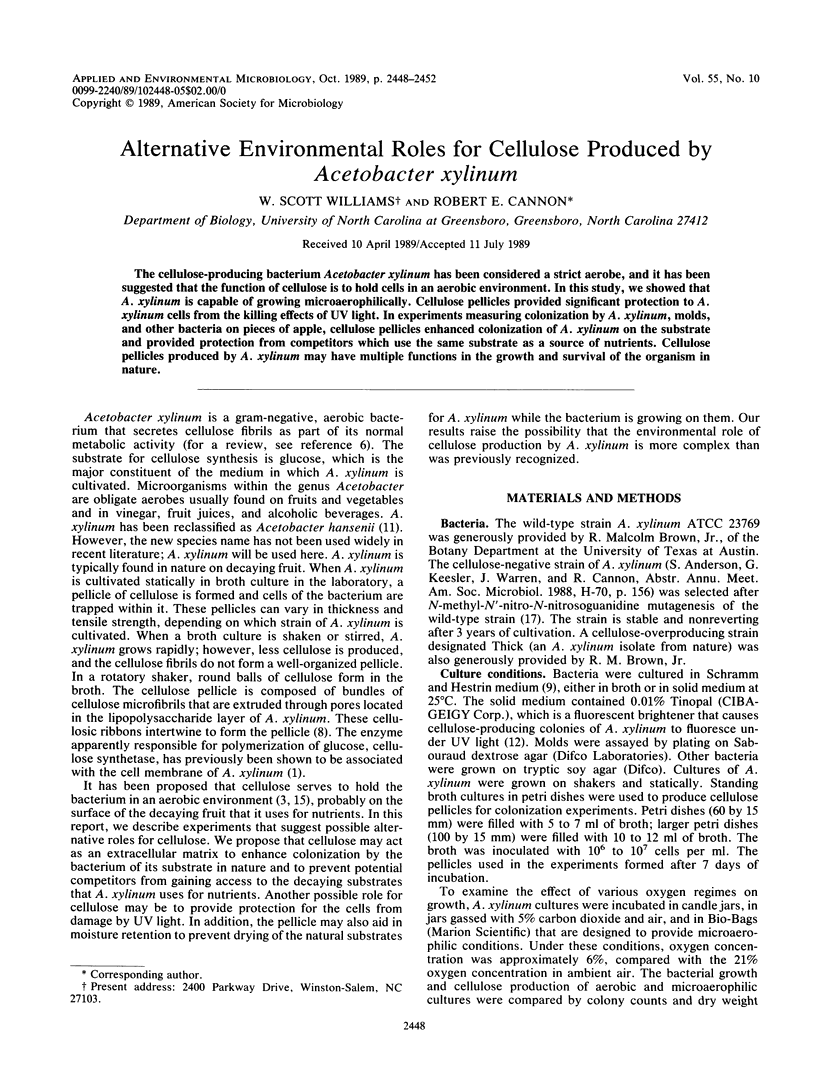
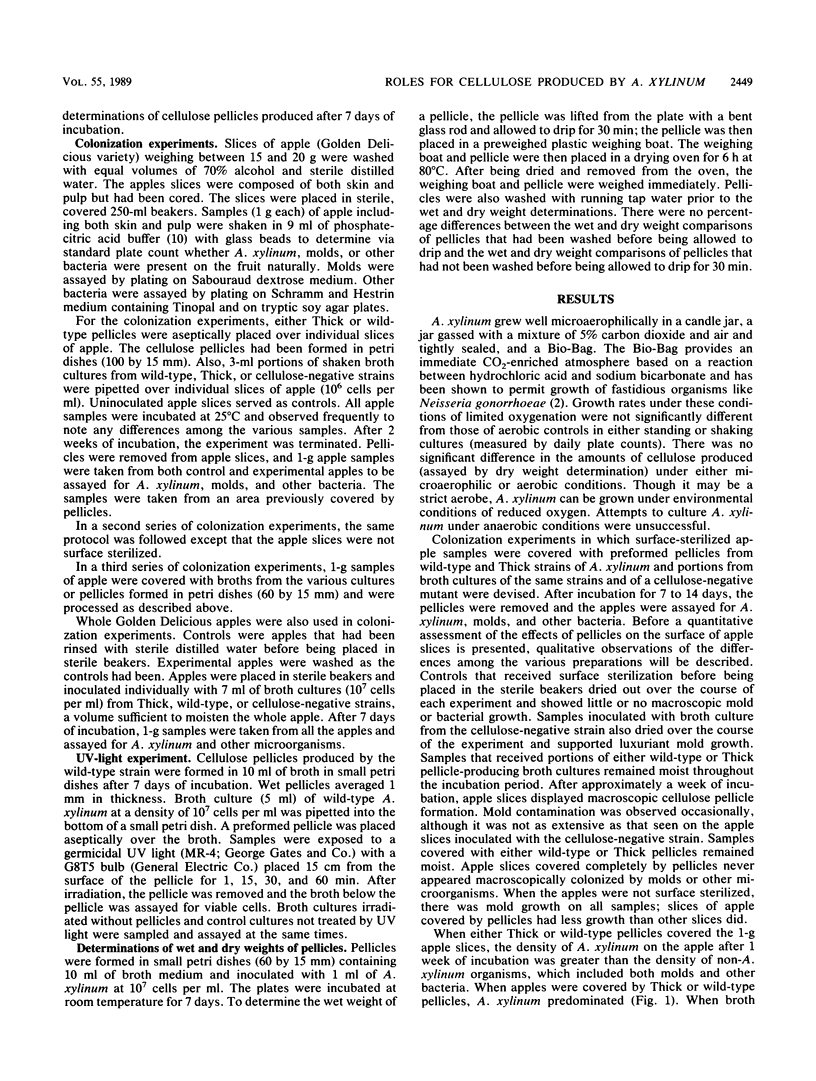
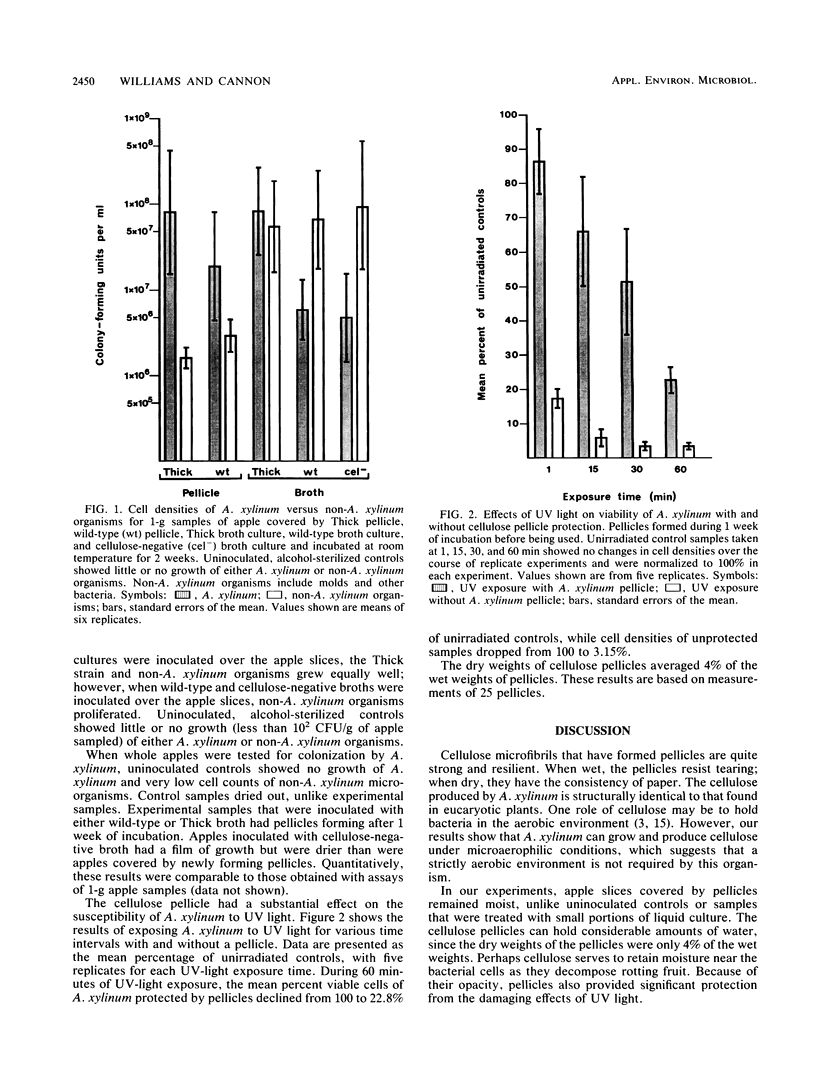
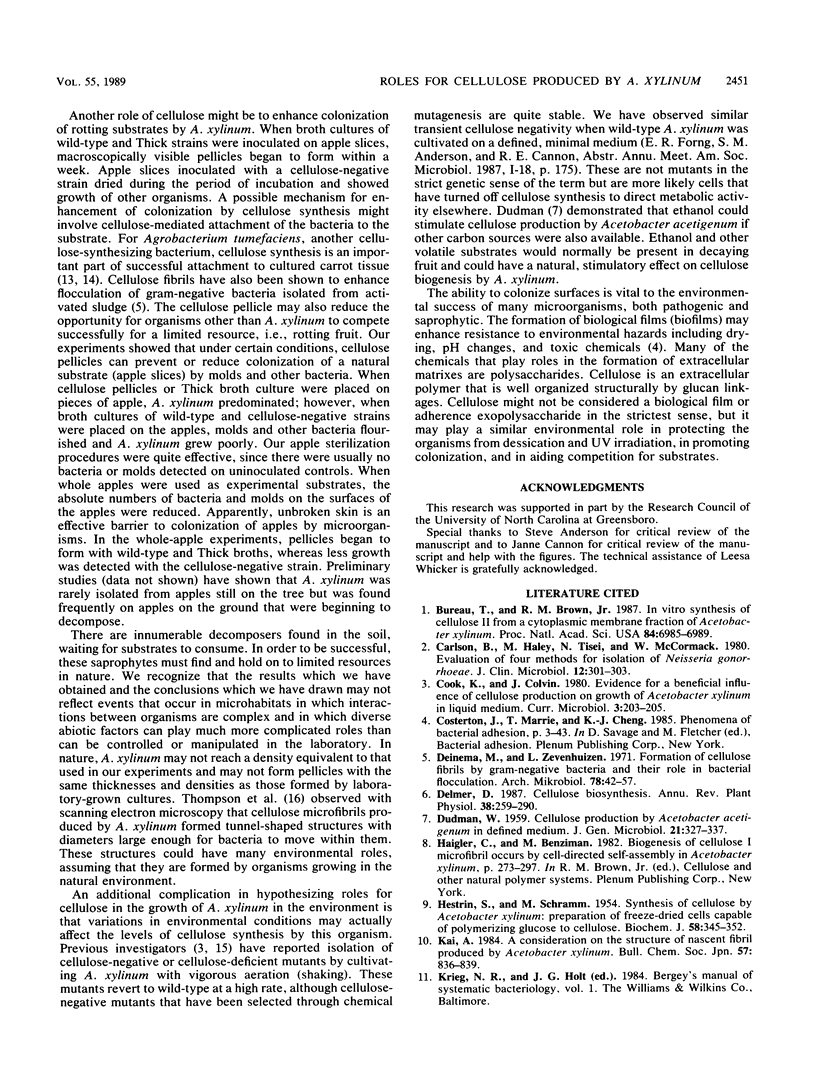
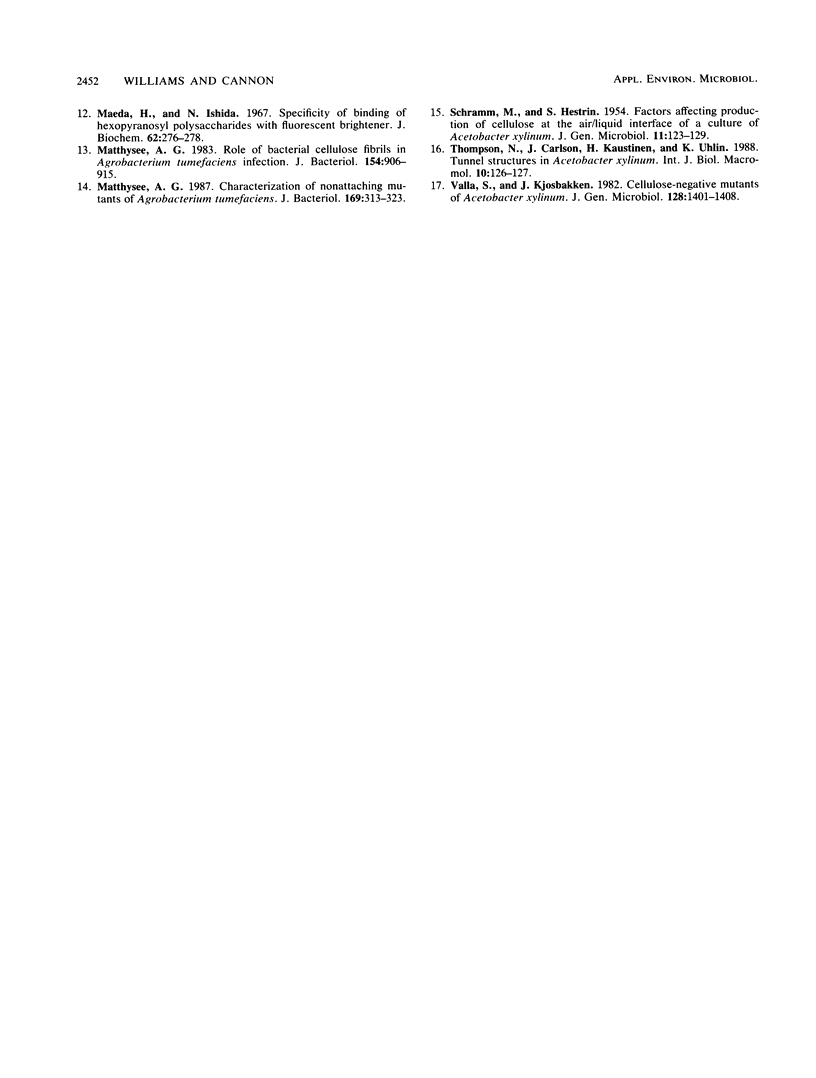
Selected References
These references are in PubMed. This may not be the complete list of references from this article.
- Bureau T. E., Brown R. M. In vitro synthesis of cellulose II from a cytoplasmic membrane fraction of Acetobacter xylinum. Proc Natl Acad Sci U S A. 1987 Oct;84(20):6985–6989. doi: 10.1073/pnas.84.20.6985. [DOI] [PMC free article] [PubMed] [Google Scholar]
- Carlson B. L., Haley M. S., Tisei N. A., McCormack W. M. Evaluation of four methods for isolation of Neisseria gonorrhoeae. J Clin Microbiol. 1980 Sep;12(3):301–303. doi: 10.1128/jcm.12.3.301-303.1980. [DOI] [PMC free article] [PubMed] [Google Scholar]
- DUDMAN W. F. Cellulose production by Acetobacter actigenum in defined medium. J Gen Microbiol. 1959 Oct;21:327–337. doi: 10.1099/00221287-21-2-327. [DOI] [PubMed] [Google Scholar]
- Deinema M. H., Zevenhuizen L. P. Formation of cellulose fibrils by gram-negative bacteria and their role in bacterial flocculation. Arch Mikrobiol. 1971;78(1):42–51. doi: 10.1007/BF00409087. [DOI] [PubMed] [Google Scholar]
- HESTRIN S., SCHRAMM M. Synthesis of cellulose by Acetobacter xylinum. II. Preparation of freeze-dried cells capable of polymerizing glucose to cellulose. Biochem J. 1954 Oct;58(2):345–352. doi: 10.1042/bj0580345. [DOI] [PMC free article] [PubMed] [Google Scholar]
- Maeda H., Ishida N. Specificity of binding of hexopyranosyl polysaccharides with fluorescent brightener. J Biochem. 1967 Aug;62(2):276–278. doi: 10.1093/oxfordjournals.jbchem.a128660. [DOI] [PubMed] [Google Scholar]
- Matthysse A. G. Characterization of nonattaching mutants of Agrobacterium tumefaciens. J Bacteriol. 1987 Jan;169(1):313–323. doi: 10.1128/jb.169.1.313-323.1987. [DOI] [PMC free article] [PubMed] [Google Scholar]
- Matthysse A. G. Role of bacterial cellulose fibrils in Agrobacterium tumefaciens infection. J Bacteriol. 1983 May;154(2):906–915. doi: 10.1128/jb.154.2.906-915.1983. [DOI] [PMC free article] [PubMed] [Google Scholar]
- SCHRAMM M., HESTRIN S. Factors affecting production of cellulose at the air/liquid interface of a culture of Acetobacter xylinum. J Gen Microbiol. 1954 Aug;11(1):123–129. doi: 10.1099/00221287-11-1-123. [DOI] [PubMed] [Google Scholar]


